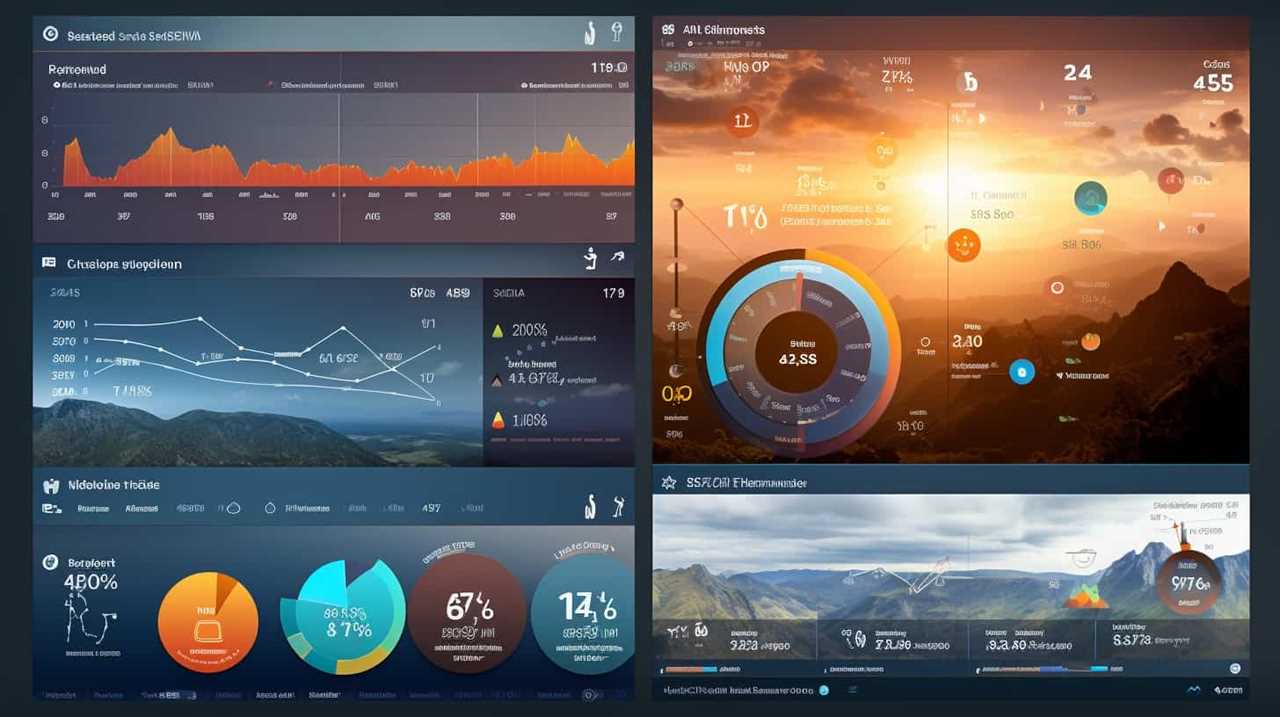Every one of us has experienced the frustration of a website taking too long to load or a sudden drop in our organic search rankings.
But did you know that technical SEO could be the solution? In fact, 61% of websites experience a drop in traffic due to technical issues.
Whether you’re launching a new website or facing mobile usability problems, it’s time to take control and optimize your site for better performance.
Let’s explore when you should prioritize technical SEO to achieve liberation from these common challenges.

Key Takeaways
- Prioritize conducting technical SEO during a new website launch or redesign.
- Address mobile usability issues for optimized technical SEO and user experience.
- Slow page speed negatively affects technical SEO and user experience.
- Address indexing or crawling issues to optimize technical SEO.
New Website Launch or Redesign
When launching or redesigning a new website, we should prioritize conducting technical SEO. This is crucial because it sets the foundation for a successful online presence.
First, keyword research is of utmost importance. By identifying the right keywords, we can optimize our website’s content and ensure that it aligns with what our target audience is searching for. This helps us attract relevant traffic and improve our organic rankings on search engine result pages.
Additionally, optimizing the website structure is key. A well-organized and easily navigable website improves user experience and allows search engines to crawl and index our pages more effectively. This increases the chances of our website ranking higher in search results.
Failing to prioritize technical SEO during a new website launch or redesign can lead to a drop in organic rankings or traffic, hindering our online visibility and potential for success.

Drop in Organic Rankings or Traffic
To avoid a drop in organic rankings or traffic, we need to continuously monitor and optimize our technical SEO efforts. When our website’s rankings or traffic start to decline, it’s crucial to take immediate action to identify and address any technical issues that may be causing the drop. This requires a thorough analysis of our website optimization and keyword research strategies. By conducting regular audits and staying up to date with the latest SEO best practices, we can identify any potential issues and make the necessary adjustments to improve our website’s performance. Here is a table summarizing the key steps to take when experiencing a drop in organic rankings or traffic:
| Steps to Take | Description |
|---|---|
| Conduct a website audit | Evaluate the overall health of our website and identify any technical SEO issues |
| Analyze keyword performance | Assess the performance of our target keywords and determine if there are any opportunities for optimization |
| Review content strategy | Ensure our content aligns with our target audience and relevant keywords |
Mobile Usability Issues
Addressing mobile usability issues is crucial for optimizing our technical SEO efforts and ensuring a seamless user experience. In today’s mobile-first world, where more than half of all internet traffic comes from mobile devices, it’s essential to prioritize mobile responsiveness and user experience optimization.
Here are five key reasons why mobile usability is paramount:
- Improved search rankings: Google prioritizes mobile-friendly websites in its search results, so having a mobile-friendly site can boost your organic rankings.
- Increased website traffic: Mobile users are more likely to visit and engage with websites that are easy to navigate and load quickly on their devices.
- Enhanced user engagement: A positive mobile experience encourages users to stay longer on your site, explore more pages, and ultimately convert.
- Reduced bounce rate: Mobile usability issues can lead to high bounce rates, as frustrated users quickly leave your site. Optimizing for mobile can decrease bounce rates.
- Competitive advantage: With many businesses still neglecting mobile optimization, investing in mobile usability can give you a significant edge over your competitors.
Slow Page Speed
Now let’s delve into the issue of optimizing slow page speed, which directly impacts our technical SEO efforts and user experience. Website optimization is crucial for ensuring that our site loads quickly and efficiently, providing a seamless browsing experience for our users. Slow page speed not only frustrates visitors, but it also negatively affects our search engine rankings. To illustrate this point, let’s take a look at the following data-driven comparison table:

| Website A | Website B | |
|---|---|---|
| Page speed | 5 seconds | 2 seconds |
| Bounce rate | 60% | 30% |
| Conversion rate | 2% | 5% |
As you can see, Website B, with its faster page speed, has a lower bounce rate and a higher conversion rate compared to Website A. This highlights the strong correlation between page speed, user experience, and website performance. By prioritizing website optimization and improving page speed, we can enhance the overall user experience and drive better results for our business.
Indexing or Crawling Issues
When it comes to optimizing technical SEO, we also need to address any indexing or crawling issues that may be hindering our website’s performance. These issues can prevent search engines from properly crawling and indexing our web pages, resulting in lower visibility and organic traffic.
Here are some common indexing or crawling issues to watch out for:
- Broken links: Ensure that all internal and external links are working properly to avoid crawling interruptions.
- Missing or incorrect canonical tags: Implement canonical tags to avoid duplicate content issues and signal the preferred version of a page to search engines.
- Blocked pages or directories: Check for any robots.txt or meta tags that may be blocking search engine crawlers from accessing certain pages or directories.
- Duplicate content: Identify and resolve any instances of duplicate content, as it can confuse search engines and affect rankings.
- Redirect chains or loops: Minimize the number of redirects and ensure they’re set up correctly to avoid crawling and indexing problems.
Frequently Asked Questions
How Can I Optimize My Website for Voice Search?
To optimize our website for voice search, we need to focus on voice search optimization and website performance. By incorporating voice search-friendly keywords and ensuring fast loading times, we can improve our site’s visibility and user experience.

Should I Use a CDN (Content Delivery Network) for Better Website Performance?
Using a CDN has numerous benefits, including improved website performance, faster loading times, and better user experience. Implementation can be done at any time, but it’s best to consider it early on for optimal results.
Are There Any Specific SEO Considerations for International Websites Targeting Multiple Countries/Languages?
When it comes to cross-cultural considerations and targeting multiple countries/languages, it’s important to implement hreflang tags to signal to search engines which version of your content to display.
How Can I Improve My Website’s Schema Markup for Enhanced Visibility in Search Results?
To improve our website’s schema markup for enhanced visibility in search results, we should prioritize technical SEO. It’s important to optimize our website’s structure and code to ensure search engines can easily understand and index our content.
What Are the Best Practices for Optimizing Images on My Website for Better SEO Performance?
When optimizing images for SEO, we prioritize alt text and follow image optimization tips. It’s essential to provide descriptive alt text that helps search engines understand the content of the image and improves accessibility for all users.

Conclusion
In conclusion, implementing technical SEO is crucial for a successful website.
A study conducted by Moz found that websites that prioritize technical SEO experience an average increase of 10.68% in organic search traffic within the first three months.
By addressing issues such as mobile usability, slow page speed, and indexing problems, you can enhance your website’s visibility, user experience, and overall performance in search engine rankings.
Don’t underestimate the power of technical SEO in driving organic traffic and improving your online presence.











